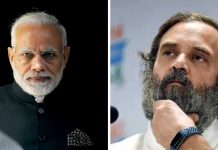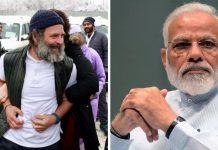
When the entire nation is witnessing a series of protests and hate against the government’s recent action, Prime Minister Narendra Modi remains the number one choice to lead the country as the next PM. Not to be surprised, the survey shows a 40 percentage point gap between PM Modi and Rahul Gandhi in the prime ministerial stakes.
Modi remains the No. 1 choice
A survey conducted by India Today Group-Karvy Insights Mood of the Nation (MOTN) said that PM Narendra Modi remains the most popular choice as the prime minister as compared to his arch-rival, Rahul Gandhi. The report explained that there was a 40 percent count gap between PM Modi and Rahul Gandhi in the prime ministerial run.
Calculating the entire vote, 53 percent have named Narendra Modi as the next prime minister, however, only 13 percent have felt Rahul Gandhi be the best suited to lead the country.

Other popular leaders
Talking about other leaders only 7 percent have given a nod to Congress president Sonia Gandhi and barely 4 percent showed faith in Home Minister Amit Shah. 3 percent consider Congress General Secretary Priyanka Gandhi to be the best alternative to Narendra Modi.

Among others, Delhi Chief Minister Arvind Kejriwal, West Bengal Chief Minister Mamata Banerjee, Union Minister Nitin Gadkari, Congress leader P Chidambaram, BSP chief Mayawati, Samajwadi Party chief Akhilesh Yadav are also named as the favorites to take controls of the country as the next prime minister.
Categorizing the votes with two different communities (Hindu and Muslim), over 60 percent of Hindus and only 17 percent of Muslims prefer to see Narendra Modi taking the controls of the country for the third time. On the other side Rahul Gandhi, the numbers are only 10 percent Hindus and 32 percent Muslims.

The report also informed about PM Narendra Modi being popular amongst Western India where 66 percent preferred to have him back as the prime minister, which, for Rahul Gandhi, is six percent.
Up to 12,141 interviews -67 percent rural and 33 percent urban, and an almost equal number of females and males- were carried, covered over 97 parliamentary constituencies in 194 Assembly constituencies in 19 states.


































